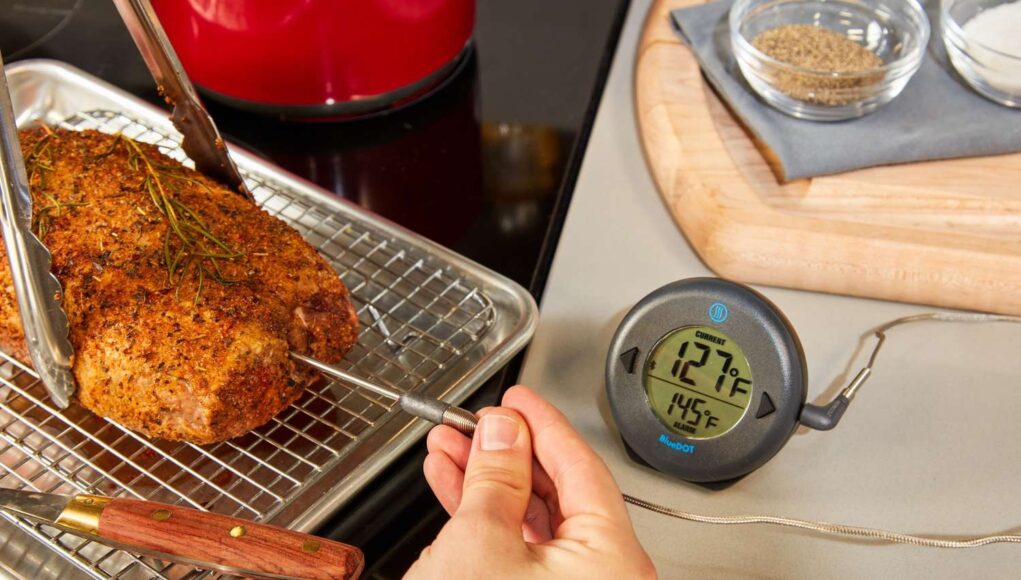Having a precise and well-calibrated meat thermometer is crucial for ensuring that your dishes are cooked to perfection. Whether you are cooking chicken, beef, or any other type of meat, knowing how to correctly calibrate your thermometer can make a significant difference in the outcome of your meals.
In this thorough guide, we will walk you through the steps on how to calibrate a meat thermometer that starts at 120 degrees Fahrenheit. This knowledge is particularly useful for chicken lovers who want to ensure their poultry is cooked safely and deliciously.

Why Calibrate Your Meat Thermometer?
Calibration of your meat thermometer ensures accuracy and reliability. A precise thermometer helps you to:
- Ensure food safety: Avoid undercooked meat, which can lead to foodborne illnesses.
- Achieve optimal taste: Cook meat to the correct doneness.
- Maintain consistency: Produce the same quality of food every time.

Equipment You Will Need
Before we begin, make sure you have the following items:
- A meat thermometer that starts at 120F
- Ice and water, or boiling water
- A container for water
- A wrench or pliers
- A clean cloth

Step-by-Step Guide on Calibrating a Meat Thermometer
1. Prepare the Ice Water Bath
Fill a container with ice and water. Stir it well, ensuring that the water temperature is as close to 32F (0C) as possible. This step is essential for the accuracy of your calibration.
2. Immerse the Thermometer
Place the thermometer stem or probe into the ice water without touching the sides or bottom of the container. Wait until the reading stabilizes.
3. Check the Reading
If your thermometer starts at 120F, you may need to slightly adjust your method. For best results, immerse the probe in boiling water instead of ice water, aiming for a reading of 212F (100C) at sea level.
4. Adjust the Calibration Nut
Using a wrench or pliers, carefully turn the calibration nut, usually located under the dial, until the thermometer reads exactly 212F (100C) in boiling water or 32F (0C) in ice water.
5. Verify the Accuracy
After adjusting, test the thermometer in either ice water or boiling water again to ensure it reads accurately. Repeat the steps if necessary.
Common Issues and Troubleshooting
Thermometer Not Holding Calibration
If your thermometer does not hold its calibration, it might be faulty or damaged. Consider replacing it if adjustments are not effective.
Inconsistent Readings
Ensure that your thermometer is clean and properly immersed in the water. Inconsistent readings can be the result of user error or a malfunctioning device.
External Factors
Altitude and atmospheric pressure can affect boiling point temperatures. Adjust for these factors if needed.
Best Practices for Maintaining Your Meat Thermometer
Regular Calibration
Calibrate your thermometer regularly, especially before critical cooking tasks.
Proper Storage
Store it in a safe, dry place to prevent damage or rust.
Cleanliness
Clean the probe thoroughly after each use to ensure accurate readings and prevent contamination.
FAQs
1. How often should I calibrate my meat thermometer?
It’s best to calibrate your meat thermometer monthly or before each use if precision is critical.
2. Can I use this method for digital thermometers?
Yes, digital thermometers can also be calibrated using the ice water or boiling water method if they have a calibration feature.
3. What should I do if my thermometer cannot be calibrated?
Consider replacing it with a high-quality model that can be recalibrated to ensure food safety and accuracy.
Useful Links
For more information on how to use a meat thermometer, visit this guide.
For tips on taking meat temperature accurately, see this article.
As an Amazon Associate, I earn from qualifying purchases.









